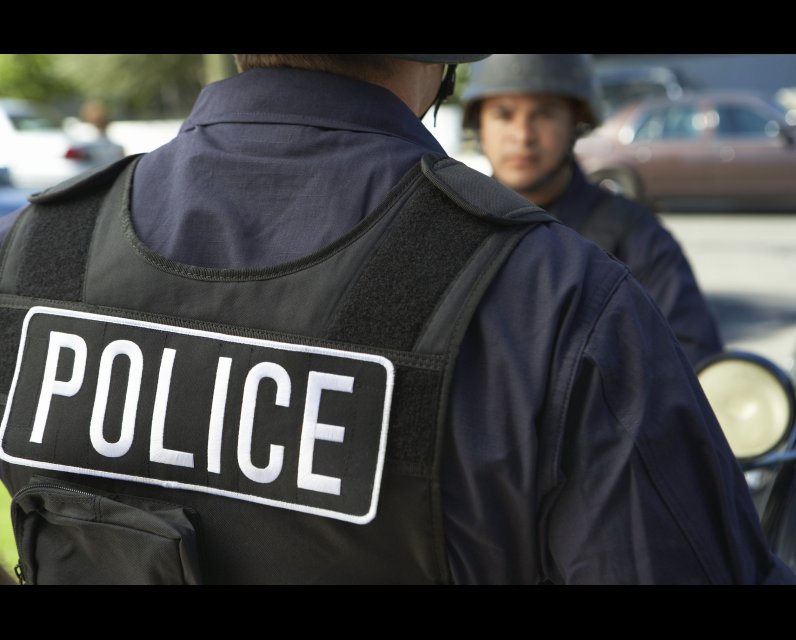Unpublished Opinions
Stretching The Thin Blue Line Even Thinner

Recent changes and issues in policing oversight and restructuring in Ottawa in particular is of dire concern - the consequences to frontline officers and to the communities the serve could be not only irreparable but dangerous. Valarie Findlay is a research fellow for the Police Foundation (USA) and holds a Masters in Terrorism Studies from the University of St. Andrew's based on her dissertation, "The Impact of Terrorism on the Transformation of Law Enforcement". Currently, she is preparing her doctoral thesis on terrorism as a social phenomenon. She can be contacted at: vfindlay@humanled.com
Much of the stress associated with policing, specifically patrol officers and those in specialized units, comes from what is known as the 'new' policing model - one that is focused on risk-reduction and threat response in complex society that has evolved in the past few decades.
Even though we have seen a steady decline in crime, including violent crime, this has been overshadowed by the most socially disparate crimes and, of course, the terrorism that has filtered down to the community level. Although the public can take comfort in the decline in crime, for policing it does not means things are 'better'; it means things are different.
When we consider these new expectations to respond to crime and threats to public safety, policing at all levels hears this conflicting message: Meet the mandate but within constraints that are prohibitive and constantly changing. The current policing model has become increasingly reactionary and response-oriented due to tight resources and budgets and is still hinged by old standards with new ones added on as demand increases.
If we look at the standard policing model its basically made up a few major components: the strategic layer that drives its overall purpose of policing, the intelligence and operational layer (specialized skills) that enable the strategy, the program layer that addresses the changing needs in policing and the administrative (primarily people and processes) and technological (primarily tools) layer that provide support the above tactical layers.
While there are many issues, many of them can be traced back to two specific break-downs in the model. One being the lack of strategically designed programs that are effective in meeting the changing threat and technology landscapes and that are maintainable - available money and skills and realistic timelines. What this translates to operationally is that the job gets done with whatever is at hand and human resources bear the brunt, stretching capabilities even thinner. But having said that, the old-style of policing and "getting a little chalk on your cleats" is no longer permitted. ...
The other is the administrative layer, where intelligence and operational layers are hobbled without its targeted support and aligned functions, often having to backfill with their own resources. This can extended to operationalized work where officers are expected to act as warriors, psychologists, counsellors and public servants. These expectations are further squeezed budgetary and policy roadblocks down to concerns of liability and litigation in the legitimate effort to protect the communities they serve.
These two layers and their imbalance are the direct cause of workplace stress and employee satisfaction that pulls the organization apart from the inside to its outer walls. If we take into account the external pressures of media scrutiny and political pressure, its no wonder that day-to-day stress touches nearly every officer, with half of those officers reporting high levels of stress.
We only need to look at the frequency of morale, stress management and training issues in the media and what appears to be a rise in suicide, stress-related injury and grievances (noting that Canada does not have a central database to track incidents); it doesn't take long before internal issues begin to affect operational effectiveness down to personal relationships and home life. When one considers that police officers are a psychologically 'screened' segment of the population, coming into the profession mentally fit and not leaving that way, it is disturbing that a more aggressive and proactive response has not been taken. From a public service perspective, the vital importance of policing should make the integrity, cohesion and health of the organization paramount.
In the study, Policing in the 21st Century: New Policing for New Challenges[1], prepared in 2014 for the Council of Canadian Academies, several recommendations to the policing model were made and with the data that included half of the officers surveyed reported high stress levels and 46 per cent reported moderate stress levels, forty per cent of respondents said the work overload has been aggravated by understaffing in their areas and that officers typically work 53.5 hours each week, dealing with multiple, competing priorities.
From a public-facing aspect this affects the organization as a whole by appearing overly authoritative and lacking transparency, increasingly difficult for the public to navigate and physically and psychologically isolated from the communities they protect - it becomes referred to as the 'policing industrial complex'.
Regardless of the term we use - reformation, transformation, retrofit - it is clear that change is due to realign policing as an essential service to meet the needs of the public, as well as being a rewarding career for its officer.
Many studies over the past decade have called for the same, or similar improvements, such as;
- Professionalization of policing that improves work-life balance and career direction and development;
- Impartial board oversight for police, unions and the public to address concerns, represented by impartial members and professional partners, rather than biased parties (police executive, politicians, etc.);
- Internal committees to examine policing practices (evidence-based policing: proactive, sentinel, hot-spot models, et al.) for effectiveness and new needs on an ongoing basis;
- Leveraging of resources who already operationalized in threat deterrence and response in other departments that are not fully utilized;
- Improving existing communication channels and developing new ones to enhance community relationships and intelligence gathering and sharing.
The next crucial step is addressing root causes and determining how much of the problem is germane to the profession and to what extent it has resulted from poor change and organizational management. With these issues making their way into the media more and more, it is time to respond to the resounding voice of the policing membership and address the highest threat - unilateral decision-making that is disassembling our policing organizations from the inside out.
[1] Council of Canadian Academies, 2014, Policing in the 21st Century. Full report can be found here: http://www.scienceadvice.ca/uploads/eng/assessments%20and%20publications...



Comments
Be the first to comment